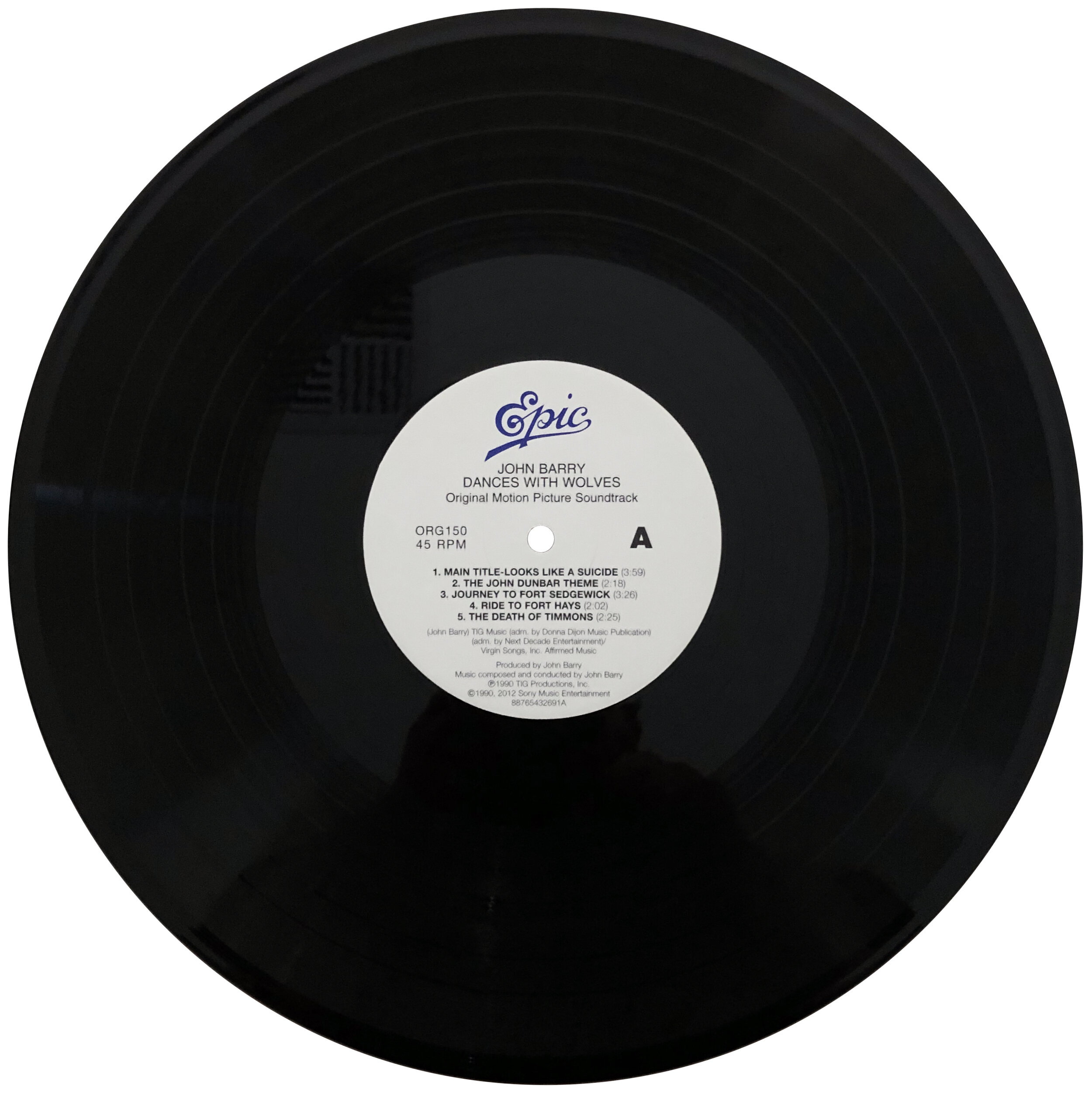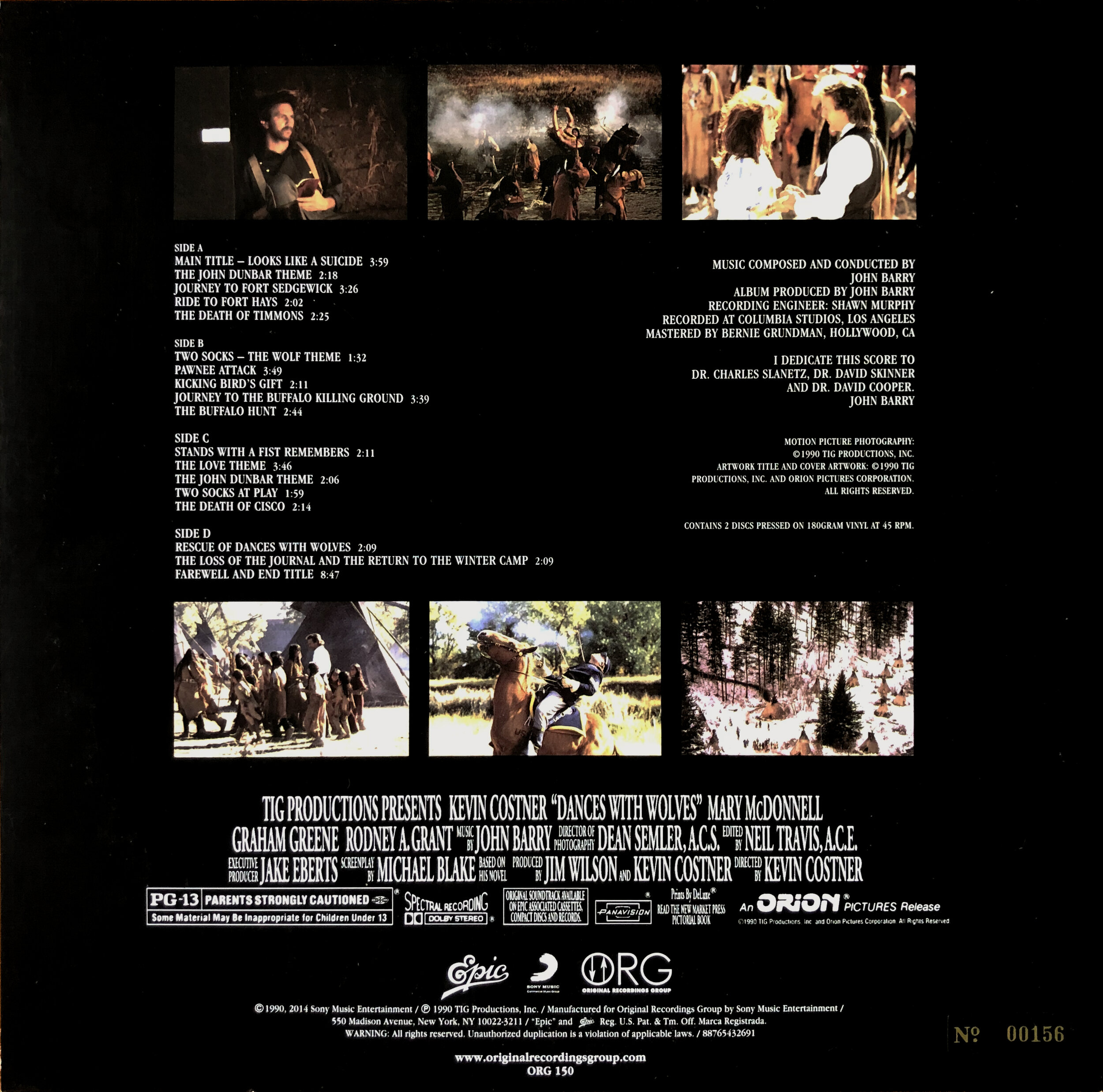Released in 1990, to correspond with the film’s release, the Dances With Wolves Original Motion Picture Soundtrack, composed by John Barry, perfectly captures the spirit and emotion of the film. From the sweeping, epic overtures to the more intimate and introspective moments, the music transcends a film score and becomes a simply sensational piece of classical music that you’ll find yourself listening to time and time again.
As one of the greatest soundtracks ever recorded, I’ve lost count of how many times I’ve played it since its release, but it would have to be hundreds if not thousands of times. You see, Dances With Wolves, unlike other soundtracks, is so remarkable that it can be appreciated in both the foreground and background as it seamlessly integrates into just about any situation.
As you may have guessed, Dances With Wolves is my favourite soundtrack of all time and while the film is epic in its own right, I can’t recall the last time I saw it. It would have to be a couple of decades. It simply didn’t make as much of an impact on me as John Barry’s score did.
In fact, I am so enamoured by this soundtrack that I’m not ashamed to admit that I have two copies. One on CD the other on vinyl. Most of the time, I find myself gravitating to the standard CD release for this is the edition that I listened to back in the 90s as it was the perfect studying accompaniment whereby the 54-minute runtime seemed to match my level of peak concentration and permitted a six-minute break before getting back to work.
Depending on which region of the world you reside in, you’ll likely find that you’ll come across one of two different cover art designs. Perhaps that is another reason why I own two copies as the vinyl counterpart offers me the alternative cover art; of course, that’s just a convenient excuse, but I can think of far worse justifications.
The CD booklet is rather basic but in all honesty, there isn’t a need for extraneous elements. Although, the vinyl reissue as I’ll come to later, could be a little more complete. That said, it would be nice to have had the orchestra members credited for John Barry may be the maestro but his orchestra isn’t mentioned and they’re the ones that turn his masterpieces into audible reality. Granted, this aspect isn’t uncommon, but it is one element that I feel needs addressing.
Sonically, the CD is as magnificent and expansive as the film that accompanied it. It’s a pleasure to listen to for its clarity and dynamic range never cease to amaze. Of course, that is before we put the Original Recordings Group (ORG) 2014 reissue on the turntable.
Towards the end of 2014, I heard that Original Recordings Group (ORG) were to release a limited, numbered, edition of this beloved soundtrack and I simply couldn’t resist. For those of you who are interested, I’m fortunate enough to own number 156 out of 2500. The number, of course, isn’t essential, but it adds further uniqueness to my collection. This particular repressing would also mark the first time the Dances With Wolves soundtrack would be reissued on vinyl, since the original 1990 release.
ORG are renowned for their sonic quality and this is no exception having been pressed and delivered at 45rpm. That, of course, means that the soundtrack is presented across four sides and is as luscious as one could hope for. Naturally, as classical music fans will note, vinyl isn’t the epitome of sonic reproduction as pops and clicks do manage to creep in in even the most arduously cleaned record playback chain. It’s simply the nature of the format and while it sounds utterly incredible, the CD release becomes sonically superior by default of not having surface noise to contend with.
Some may not mind, of course, as life has a level of surface noise that often can’t be avoided, but the ORG releases, despite being intricately reproduced, are rather expensive and if a CD at the fraction of the cost remains superior, for this listener, then one must naturally question if classical music on vinyl is a worthy endeavour.
If you can tolerate a few minor sonic blemishes, however, for the advantage that is offered with the analogue sound, then I would suggest sourcing a copy of the ORG vinyl reissue.
Additionally, ORG releases hold their value over time but the minute you put a value on your collection, a little bit of the magic disappears for it is no longer about the way the music touches your soul. Trust me, as someone who has added their collection to Discogs over the years, it seldom results in a greater appreciation of the music itself for it commodifies that which we love.
If there is one disappointment to note regarding the ORG reissue, it is that despite being a gatefold design, nothing is printed on the inner gatefold. It is like looking into a void for it’s black and empty. Naturally, you’ll notice that I haven’t included this element in the selection of photographs above, but if you take a glance at the CD images, you’ll see the inner design of the CD booklet that I wish had been reproduced on the vinyl counterpart. It’s a missed opportunity and is particularly disappointing as it is promoted as a premium product.
Purists will argue that it perfectly replicates the artwork from the original vinyl release and I wouldn’t disagree with them but I would add that the original release, issued on a single LP, had no gatefold. Hence, while it may be accurate, it could have also been expanded. In every other way, however, the ORG vinyl reissue is visually stunning and worthy of having in my collection.
Turning our attention to streaming, things begin to get a little more complicated. Both the CD release and ORG vinyl reissue have the original 18-track, 53-minute, score but Apple Music et al have three editions. Two seemingly identical replicas and one with an expanded runtime and sequencing.
Seriously, why do record labels do this? The original release is perfect and the bonus tracks from a 2004 reissue program detract from the flow of the recording. Yes, after 30+ years of listening to this soundtrack, I know it inside and out so any deviation will always be a shock to the system, but while many of the additional tracks blend in adequately, songs such as Fire Dance offer a considerably different tone thereby creating the aforementioned distraction. I’d also add that just because it may have worked well within the context of the film, that doesn’t mean that it will work well when presented chronologically on the soundtrack. The number of soundtracks that have been ruined by extraneous content never ceases to amaze me. Watching a film, and listening to the score, in my mind, are two entirely different processes. They should complement each other but a soundtrack need not replicate the film experience.
While I may be lamenting the different versions, and don’t even get me started on the 25th Anniversary double CD edition, one thing that we should be grateful for is that this soundtrack is still readily available. As fans of original motion picture soundtracks will note, few survive past their initial release and when added to streaming services, tracks are often missing due to contractual issues. A frustrating aspect; certainly!
What isn’t at all frustrating is the music contained within this release. Regular readers will note, I generally divulge into a discussion of the individual songs, on any given album, but as it pertains to classical scores, I feel it is best to let the music speak for itself for this body of work is exceptional and worthy of inclusion in every music collection; particularly one with a classical or film score focus.
![Dances With Wolves – Original Motion Picture Soundtrack (Composer: John Barry) [Album Review]](https://images.squarespace-cdn.com/content/v1/565c1ab5e4b05079e4bfa169/1661212988423-661W7XFO6AN1X5TVBCUI/Dances+With+Wolves+Soundtrack+Cover.jpg)









